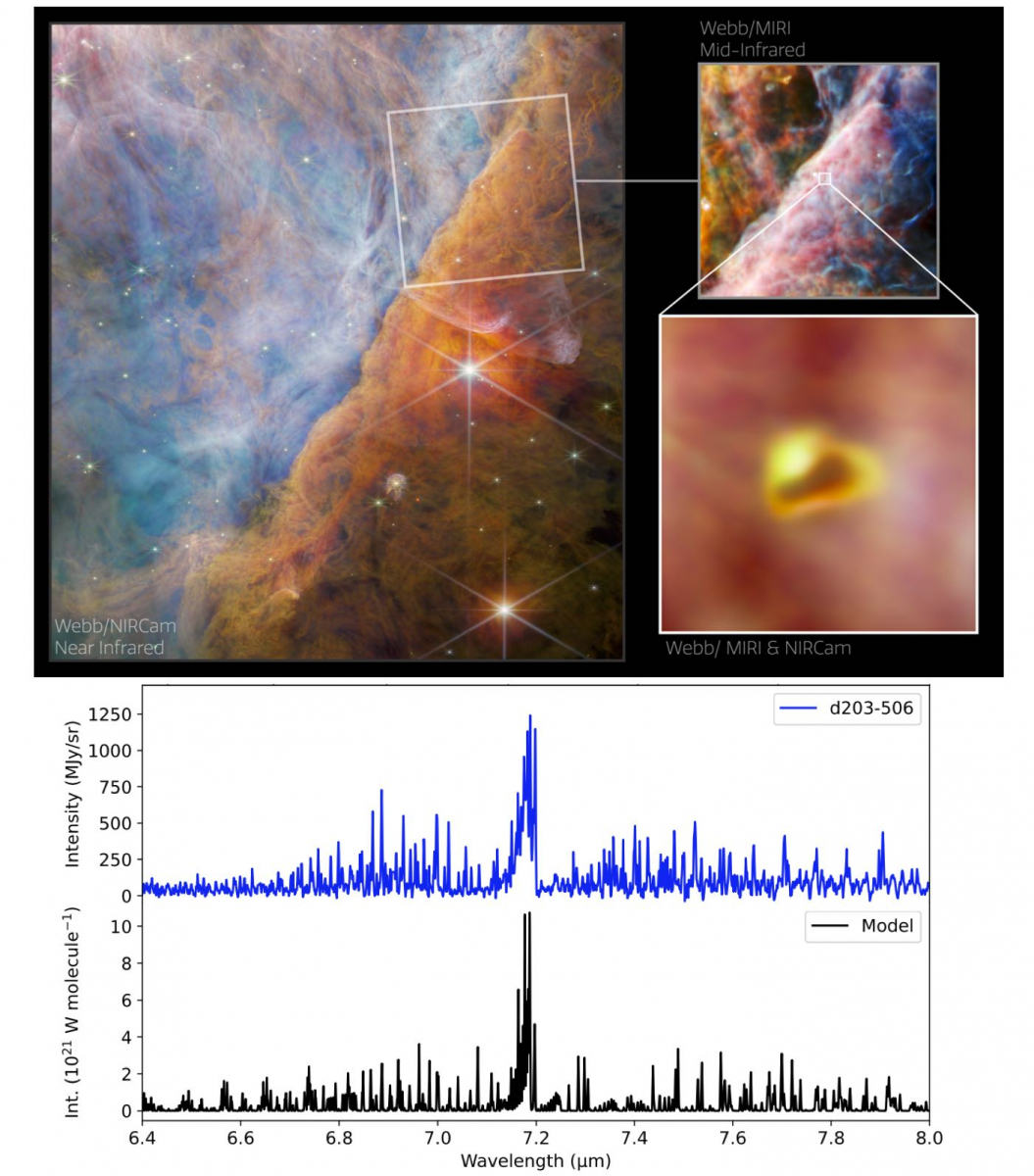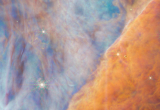A new species detected by the JWST space telescope
An international research team including researchers from IRAP, ISMO and IAS (CNRS and University Paris-Saclay), LERMA, and IPAG, used the data collected by the JWST (James Webb Space Telescope, NASA/ESA/CSA) to detect for the first time the methyl cation (CH₃⁺). This detection has been obtained in the protoplanetary disk surrounding a young star in the Orion Molecular Cloud region, approximately 1300 light years from Earth. This detection is the result of a fruitful collaboration between astrophysicists, astrochemists and spectroscopists, including an essential contribution from laboratory spectroscopists.
The methyl cation is a fairly simple carbon molecule which has a unique property: it reacts relatively inefficiently with the most abundant molecule in our universe (molecular hydrogen), but it reacts easily with other molecules, allowing the formation of much larger carbon-based molecular complexes. Carbon chemistry is of particular interest to astronomers because all known life forms are based on carbon. The vital role of CH₃⁺ in interstellar carbon chemistry has been predicted since the 1970s, but JWST's unique abilities have finally made it possible to observe it — in a region of space that could eventually form planets capable of hosting life.
This research is part of the "PDRs4All" project, one of the 13 JWST "Early Release Science" programs supported by three co-PIs including Olivier Berné from IRAP (Toulouse), Emilie Habart from University Paris Saclay, and Els Peeters from the University of Western Ontario (Canada). These observations are designed to showcase JWST's observing capabilities and allow the astronomical community to learn how to get the most out of their instruments. The data reduction of JWST/MIRI-MRS, the instrument that allowed the detection of the CH₃⁺ molecule, was carried out at the French center of expertise MIRI, with the support of CNES and the INCLASS ANR-labcom project between IAS and the ACRI-ST company.
Links:
Contact at IAS: Emilie Habart

Top figure: JWST images of the Orion Bar with a zoom on the proto-planetary disk d203-506 (ESA link). Bottom figure: comparison between the JWST spectrum of the proto-planetary disk d203-506 and the modeled CH₃⁺ spectrum.




